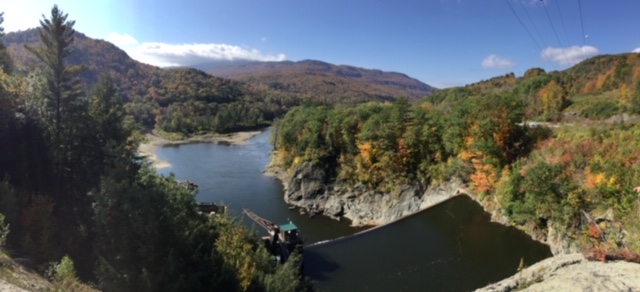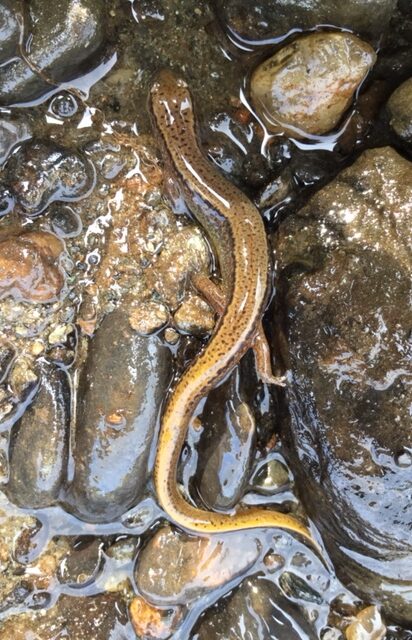Flipping Rocks
Note: this post is the answer to a natural history quiz I posted to my instagram account. Follow me to get weekly natural history quizzes.
Question:Â With amphibians of the move, they’re easier to spot this time of year. I found this one hiding under a rock in the Winooski River. Who is it?
I went fishing with my uncle yesterday. At our second spot, a nice riffle along the Winooski River in North Duxbury, I was fishing with crayfish. They’re pretty easy to find – I had about a 10% success rate by flipping over medium to large rocks. I had a fair amount of success, mostly catching virile crayfish. I flipped over a dinner plate sized rock and was surprised to see a northern two-lined salamander (Eurycea bislineata) crouched down in the water. It’s body was about 3/4 submerged and as the water gently pulsed back and forth it was occasionally fully submerged. They’re common throughout the state of Vermont, but this is the first one I’ve seen outside of spring migration.

Fishing along the Winooski River in perfect fall weather. Didn’t catch a thing.
Two-lined salamanders are preyed upon by spring salamanders (which we also have), blue jays, shrews, trout, and garter snakes. I like to imagine this salamander was stealthily avoiding droves of water shrews and scolds of migrating blue jays. On occasions where they do encounter shrews or jays, they attempt to defend themselves. In one experiment where two-lined salamanders were placed in a container with short-tailed shrews, the salamanders took a defensive posture while the shrews attacked primarily by going first after the tails. Only 26% of the salamanders survived attacks. Of the dead, almost half were not eaten, indicating that skin secretions make this a less than tasty treat for shrews. Shrews will also get into a defensive posture in the presence of jays. However, they turn and run when confronted by garter snakes, which are notoriously unfazed by amphibian toxins (link).
These salamanders have a rather broad distribution thanks to their rapid dispersal ability, and have been observed all the way up north in the Hudson Bay (this area has only been deglaciated for about 8000 years (link). They’re common here in Vermont near seeps and rocky streams in wooded areas, less so in the spot where I found this one. The place for detailed info on Vermont’s herps (snakes, lizards, turtles, salamanders, frogs, and toads) is the Vermont Herp Atlas maintained by Jim Andrews. They’ve got detailed info on call times for frogs and toads, distribution maps, and lots of other Vermont-centric information.




